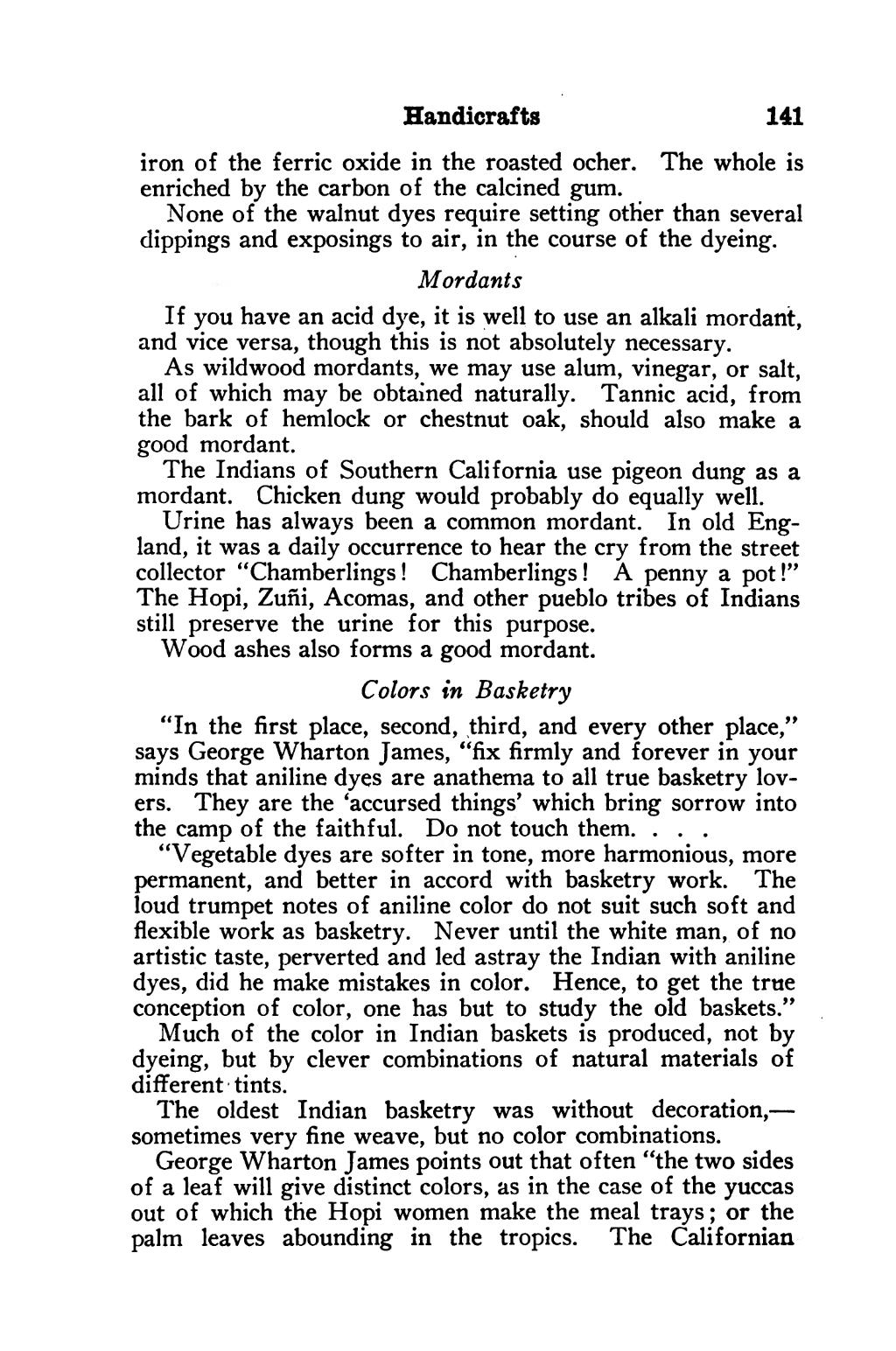Handicrafts 141 iron of the ferric oxide in the roasted ocher. The whole is enriched by the carbon of the calcined gum. None of the walnut dyes require setting other than several dippings and exposings to air, in the course of the dyeing. Mordants If you have an acid dye, it is well to use an alkali mordant, and vice versa, though this is not absolutely necessary. As wildwood mordants, we may use alum, vinegar, or salt, all of which may be obtained naturally. Tannic acid, from the bark of hemlock or chestnut oak, should also make a good mordant. The Indians of Southern California use pigeon dung as a mordant. Chicken dung would probably do equally well. Urine has always been a common mordant. In old Eng- land, it was a daily occurrence to hear the cry from the street collector “Chamberlings! Chamberlings! A penny a pot!” The Hopi, Zufii, Acomas, and other pueblo tribes of Indians still preserve the urine for this purpose. Wood ashes also forms a good mordant. Colors in Basketry “In the first place, second, third, and every other place,” says George Wharton James, “fix firmly and forever in your minds that aniline dyes are anathema to all true basketry lov- ers. They are the ‘accursed things’ which bring sorrow into the camp of the faithful. Do not touch them. . “Vegetable dyes are softer in tone, more harmonious, more permanent, and better in accord with basketry work. The loud trumpet notes of aniline color do not suit such soft and flexible work as basketry. Never until the white man, of no artistic taste, perverted and led astray the Indian with aniline dyes, did he make mistakes in color. Hence, to get the true conception of color, one has but to study the old baskets.” Much of the color in Indian baskets is produced, not by dyeing, but by clever combinations of natural materials of different tints. The oldest Indian basketry was without decoration,— sometimes very fine weave, but no color combinations. George Wharton James points out that often “the two sides of a leaf will give distinct colors, as in the case of the yuccas out of which the Hopi women make the meal trays; or the palm leaves abounding in the tropics. The Californian
Stránka:roll 1931.djvu/157
Z thewoodcraft.org
Tato stránka nebyla zkontrolována
